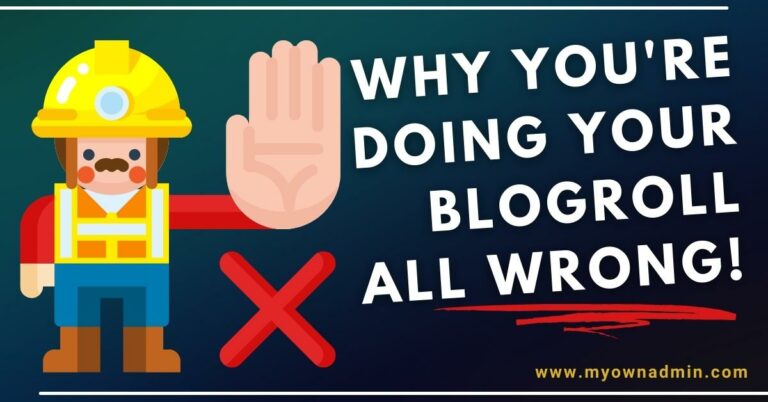Last Updated on November 17, 2022
Readable content is a necessity in today’s content. So, how do you go about writing it? With that in mind I’ve gathered 5 writing tips for making the content more readable.
Quality content is about understanding difficult concepts and defining them in simple words/languages. One of the leading elements in this process is the readability and simple nature of any text. So, how can a writer do that? Let’s find out.
Defining Readable Content
Readable content is a must for any blog or website today. The content should be easy to understand and should not be too long. It should also have the right tone and structure. Good readable content is not just about sentence length; it’s about the whole readability of the text.
This includes how paragraphs are structured and how sentences are punctuated and related to one another. Therefore, it’s necessary in the online world to ensure readability by following a specific set of practices. Let’s keep digging to understand what they are.
05 Writing Tips For Making The Content More Readable
From a proper content structure to using online tools, you need to use various techniques to ensure that you write readable content. So, let’s talk about the five tips to help you get there.
1. Easy Structure
The structure of your content dictates how it will flow in the eyes of your target reader. If the flow isn’t there, your content’s structure is lackluster.
That’s why you need to be able to structure your content properly to ensure readability. But how exactly do you structure your content? Here are a few key things that you can do:
- Make sure you use headings H1 and H2 to talk about key headlines;
- Follow up H2 with H3 and H4 subheadings to emphasize points and subpoints;
- Use bullet points and numbered lists with H3 or H2 to talk about key essentials;
- Provide emphasis on specific headlines by using bullet points within them.
This way, your content will appear well-structured and allow you to write linearly. Besides that, it’ll help you ensure that your structure emphasizes key points within your article—making it easier to read and understand for your target audience.
💁 read next » How Do Content Writers Research A Topic?
2. Simple Content Tone
The content tone is yet another deciding factor in the readability of your content. If you’re using a difficult content tone or not being friendly in your content, then your content isn’t going to hit it off. It would help if you used a proper tone to engage properly with your reader.
Does it sounds hectic or difficult?
No need to worry as you have the option of using a paraphraser. This tool will help you make your content’s tone more simple and conversational.
Moreover, a paraphraser will use modern yet simple vocabulary in your content which makes your content more readable and attractive.

In academic content, the tone needs to be formal and professional. However, in blogs or marketing content, you have a blank cheque. In other words, you write according to your audience—which means you write in a conversational tone for the most part.
So, that’s when simple content tone comes into play once more. So, how do you write in a simple content tone? Here’s how:
- Always aim to write using simple words;
- Use a paraphraser to achieve specific content tones;
- Talk/write in a conversational style if guidelines allow it;
- Once again, avoid using technical language.
These are some of the most viable tactics that many experts use to avoid making their content complicated or difficult to understand. That’s why you need to keep it as simple as possible.
And make sure that you’re using easy words and writing in a friendly, nonchalant, and conversational content tone for your reader.
💁 You might also read » Can I Start Blogging Without Skills? Ultimate Guide and Tips
3. Simple Language, No Jargon
One of the major reasons behind unreadable content is the excessive use of technical jargon and high vocabulary. You don’t need to be a literary master to provide a proper understanding or argument about your topic.
A good writer will always simplify instead of complicating things for the reader. So, when you read a difficult word or headline, “oh, that’s a new word!” resist the urge to use words like that.
If any of your content requires your target audience to go to Google or open up a dictionary, then you’re not exactly using simple language. So, here’s what you should do instead:
- Use the most common synonym;
- Avoid technical jargon at all costs but it’s acceptable in some cases;
- Use the simplest words possible;
- Avoid using difficult vocabulary;
- Keep sentences simple.
These are some of the key traits of any readable text. It’s not only important to keep the language simple, but also to simplify complex ideas. In other words, describe things in layman’s terms.
Sometimes you write for specific niches—in which you write for experts. That’s when you can use higher vocabulary and technical jargon. But, unless that is the case, avoid using difficult words.
4. Sentence & Paragraph Length
The ideal sentence and paragraph length can and will help you decide how readable your content is. A lot of times, unreadable content is the one that’s not only long but uses long paragraphs and even longer sentences.
Featured Article from MyOwnAdmin.com!
Check out “Wealthy Affiliate Review” a step-by-step training program that will teach you how to start your own passive income blog.
Moreover, if your text has fewer white spaces, it isn’t easy to understand. Your content needs to feature a lot of white space, so you need smaller sentences and even smaller paragraphs. So, what’s the ideal length for sentences and paragraphs? Keep two things in mind:
- A sentence should be 10-15 words. Even though exceptions can be made, they should never exceed 15-20 words.
- The paragraph needs to be 3-4 lines or 3-4 sentences. Once again, there are exceptions, but anything beyond 4 lines is fairly within the unreadable territory.
These are the two things that can help you write quality content without having to compromise the informative value. Keep your sentences short by writing a concept within 10-15 words. So, when writers aim for 10, they end up writing 15.
Thus, it would be best if you always went for the lower value, as it’ll help you write shorter sentences and adequate paragraphs.
5. Be Engaging

This tip might sound vague, but being engaging isn’t difficult when you get the gist. Non-engaging content is when a writer explains something and leaves.
Engaging content is informative, actionable, asks questions, and makes you ask a question. If a blog or website has ever made you want to ask questions or comment for further queries, they have succeeded in engaging.
So, ask questions and urge your readers to ask them back to be more engaging and readable in your content.
Conclusion
These are some essential tips and tricks seasoned writers use in their content. This allows them to write readable content and be engaging at the same time.
So, avoid using jargon, use simple language, and be as short and concise as possible in defining concepts.
| START YOUR FREE ACCOUNT HERE | ||
|




